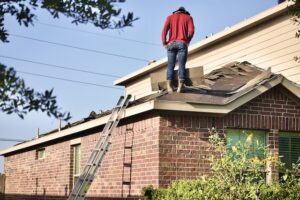Rising damp is a common issue that occurs in many buildings and this is due to groundwater rising through porous building materials like mortar and bricks. When this happens there can be significant damage to your property. It will impact your walls, floors and other building materials in contact with the dampness. This can also negatively affect your health as it can create a favourable environment for mould and mildew growth.
There are many reasons for rising damp and you can contact reliable companies to provide you with rising damp solutions Perth. You have to make sure that the company you choose is experienced in similar issues and has a proven track record for workable solutions. One reason that moisture can rise up through the walls of a building is because of a damaged damp proof course. Sometimes these can become damaged due to structural movement over time or weathering. This is why it is so important to inspect these regularly. You may need to repair the damp proof course from time to time. There are reputed companies that can inspect your home for rising damp and pinpoint the reason. This gives them a solid place to start correcting the issue. Before design and construction, there has to be a test done at the site to check groundwater levels.

There are certain regions where the water table is quite high.
Some places tend to have wet soil. In these conditions, there have to be precautions taken in the design and construction stage to prevent groundwater from coming through the building. This is a phenomenon that you will usually see in older buildings that have shallow foundations. A house comes with a lot of maintenance requirements and when these tasks are not completed, it can lead to big issues. For example, when your drains and gutters are not cleaned of debris, they can get blocked leading to water pooling around the foundation of the building. Make sure you clean the gutters before the rainy season and ensure water is directed away from the foundation to prevent this.

When there is poor ventilation inside the house, it can lead to moisture accumulating inside.
And over time it can lead to dampness. You need to locate areas where moisture is generally present like the kitchen, bathrooms and laundry rooms to make sure these are properly ventilated. You can install mechanical exhaust fans as well and create windows where possible so that sunlight comes into the area and dries out dampness. If you are moving into a new house, you will need to check it for structural defects such as cracks in the foundation, walls or floors before you occupy it. This way, you can block out entry points that let moisture into the building. If you leave rising damp untreated, in addition to mould growth, it can also damage the building material affecting the structure of the building. There will be unpleasant odours created by mould and mildew exacerbating respiratory issues. The repairs required will be quite costly if the structure of the building is compromised.



